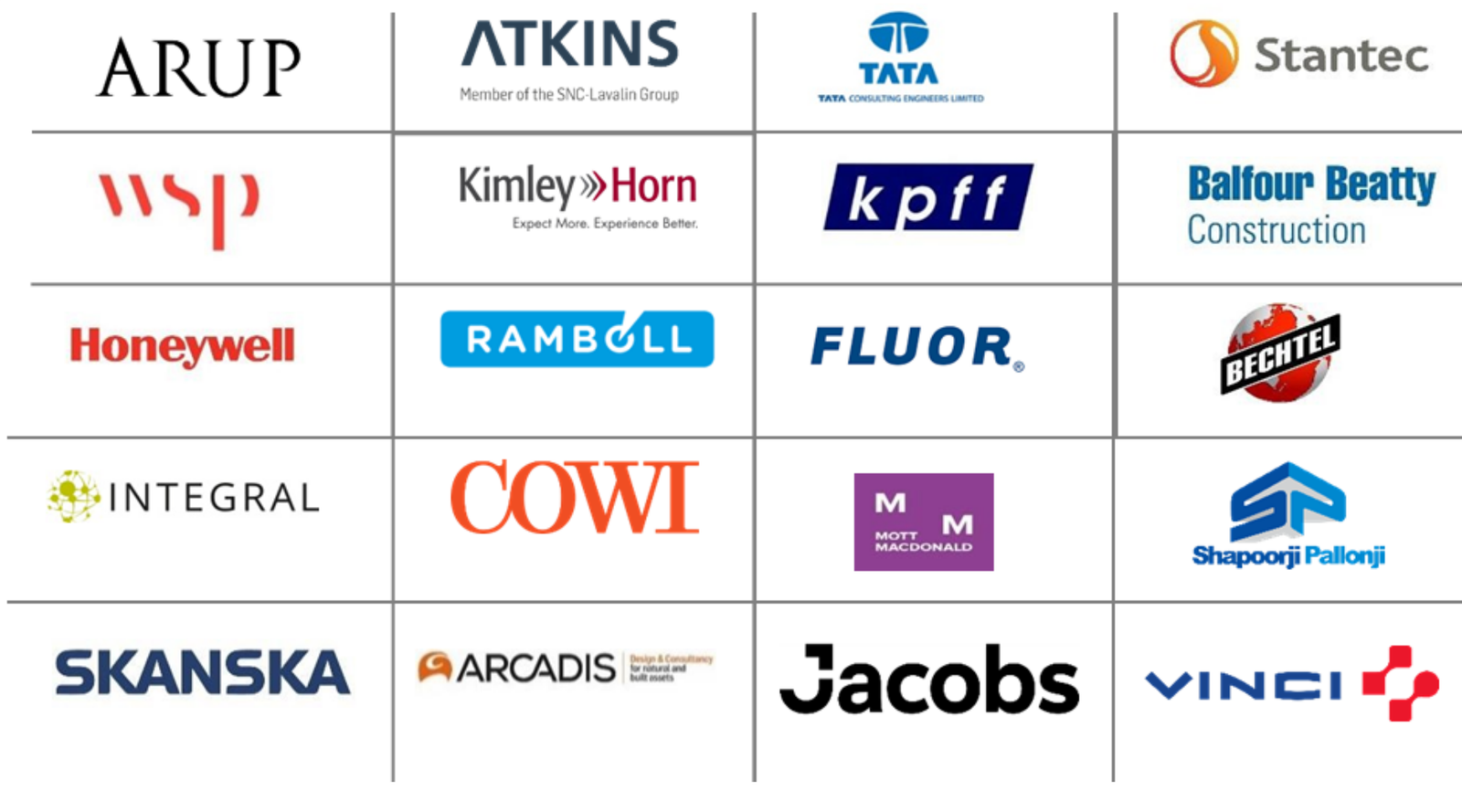INSTRUCTORS:
BRIDGE STRUCTURE
Working departmentAddress
Online/Live/E-Class Room View mapCategories
PG Certification programPOGRAM OUTLOOK
PG Program in Bridge Design & BrIM Technology is a full flange training program which enable you to pursue your carrier in different technical positions. Due to technical advancement in Design and engineering worldwide professional qualification are not satisfying current MNC company job demand, So STRUCTUREX Department of corporate training design this course for Professional, Fresh Graduate and Technical Specialist. Real challenge for engineers and technical specialist are increasing day by day due to project complexity and environment factor, by adapting data driven technology this course enables you to accept that challenges. Bridge Design and engineering is one of the adventures and challenging field in human Mankind. Worldwide there are many of iconic bridge structure, so in this course we will do case study of iconic bridge structure. Computational Engineering and design enable us to design and build most efficient engineering model, their parameter is driven by Visual programming language with FEA and Solid element-based software. Cloud based remote workstation and working in a team will give you real exposure.
Explore Career in
- BRIM (Bridge Information Modelling)
- Bridge Analysis
- Bridge Design
- Bridge Information Management
Certification
- PG Diploma in Bridge Analysis and Design
- 8 Month Experience Certificate
- Project Certification
- Letter of Recommendation
Technical Features
- Concept + Multinational environment (IRC/ASTO/ACI/BS/EUROCODE) + Tools and Software
- 20+ Assignment
- 10+ Project
- Live Project
- Software training basic to most advance
- Project Workshops
Process Involved
- BrIM (Bridge Information Modelling)
- Analysis of Different type of bridge structure
- Design of bridge structure and their substructure
- Seismic and wind evaluation and research
- Research and Development for bridges
Program methodology
Engineering skills and Technology ! Whole course content with concept, engineering theory code provision and Tools(software). We give same importance for all the steps involves throughout the projects. Like Concepts design, Engineering Design, Management and Automation.
Program Module: 01
Topic: BrIM (Bridge information Modelling) creating different type of bridge geometry with detailing of reinforcement and steel connection. Software: Tekla structure Tekla Structure: Although BIM can be utilized in various types of building projects, its use in bridge construction has been limited. Instead of vertical architecture, bridges are horizontal travel ways, and the projects are by default heavy construction assignments. Like a version of BIM customized to suit bridge projects, BrIM provides a complete representation of the physical and functional characteristics of a bridge asset, offering an information resource for its entire lifecycle. Bridge Information Modeling (BrIM) boosts the quality of design with accurate information, consistent documentation, and improved constructability of structures. BrIM allows for accurate pre-fabrication and just-in-time material deliveries, and supports project collaboration across disciplines. Ultimately resulting in optimized solutions for all project parties as well as storing information for preventive maintenance.
- Modeling of Bridge Structure,
- Detailing of Bridge Structure Fundamentals,
- Bridge Management and Report,
- Bridge Fabrication detailing ,
- Brim Collaboration and Cloud Support.
Model to build and maintain Tekla Structures is a full structural workflow solution from geometry to rebar design or connection detailing, followed by steel fabrication or precast manufacturing, all the way to erection and planning of scaffolding, concrete formworks, and pours on-site. And, when the revisions are updated during construction, the owner has an as-built model to be registered and used for asset management.
1. Model to build
2. Import road alignment automatically
3. Define key sections easily
4. Detail Rebar efficiently, any size or complexity
5. Update the model at any time
6. Add content from our library
7. Accurate quantities and documentation
8. Communicate with the model
9. Prevent errors and waste on-site
10. Use the model for asset management
Program Module:02
Topic:
1. Bridge Basic to Advance Analysis,
2. Bridge Design,
3. Bridge Structure wind simulation,
4. Bridge Manual Design,
Topic: Bridge analysis and design by concepts theory and codes Code of practice: IRC:5 Section1, IRC : 6 – Section II, IRC : 21, IS : 456, IRC : 112, IS-875 (Part-1,2,3), IS : 1893, IS:1894, IRC 6-2000, ACI 318-95, AASTO 2010 Rating, AASTO 2018 Rating, AASTO LRFD, AASTO STD, BS 5400, EUROCODE Analysis: Moving Loads – Static Moving Loads – Dynamic Many powerful dynamic analysis tools available for both linear and nonlinear analysis Response Spectrum Time History Powerful Nonlinear Analysis tools associated with either geometric or material response Nonlinear Buckling P-Delta Direct-Integration Time History Buckling Staged Construction Staged Construction Stages Creep and Shrinkage Static Pushover Nonlinear Layered Shell Dynamic Modal. Design: Composite Steel I- and U-Girder Bridges, Concrete Box and Multicell Concrete Box Girder Bridges, T-Beam Bridges, Concrete Slab Bridges, Precast I- and U-Girder Bridges, Load Rating Composite Steel I- and U-Girder Bridges Concrete Box and Multicell Bridges Precast I- and U-Girder Bridges T-Beam Bridges Concrete Slab Bridges T-Beam Bridges Output and Display Deformed Geometry Force Diagrams Influence Surfaces Force Diagrams Bridge Responses Animations
- Road Bridge(RC/I Guider/T Guider)
- Box Girder Bridges
- Prestressed Concrete Bridges
- Bearings and Substructures
- Beam or box girder bridges
- Steel Truss bridges (Rail Over Bridge)
- Arch bridge
- Suspension bridges (only case study)
- Cable-stayed bridges/Balanced cantiliver (only case study)
- Underpasses or box culverts
MIDAS CIVIL
Midas Civil is the most powerful software for analyzing and designing steel, concrete, wood, aluminum and composite structures. Experienced engineers who have a good understanding of the concept of modelling, analysis and design of a structure are well aware of this well-known and professional software. Three years of experience, along with suggestions from engineers working with Midas Civil, have made it the most applicable design and analysis software available in the global marketplace. The toolbars embedded in the graphical user interface make it easy to enter the information needed for modelling, analysis, and design.
STAAD.Pro is a comprehensive and integrated finite element analysis and design application that includes visualization capabilities, a simple user interface, and a wide range of design codes. You can analyze any structure exposed to static, dynamic, wind, earthquake, thermal, and moving loads. STAAD. Pro provides structural analysis and design for any type of project, including buildings, culverts, plants, bridges, stadiums, and marine structures.
Software algorithm, capabilities, strength and weaknesses,
- Modelling of foundations, basements, footings,
- Modelling through import method 2d import, 3d import,
- Design of strips,
- Design methodology,
- Design of fem based slabs,
- Design of slabs, raft & pile,
- Design of punching shear reinforcement (stud rails).
- Detailing, reporting techniques.
- Codes & software interaction by considering national.
- Differential settlement of foundation and its control.
- Combined complex foundation system.
- Punching Shear
- Nonlinear Uplift
- Soil Structure Interaction
- Mastering the analysis & interpreting the results
- Stability check as per code
- Check on lateral Stability
- Check on Vertical Deflection
- Check on Story Drift
- Check for Over turning Moment
- Check for Control of Deflection
- Modal Analysis Check
Bridge Substructure Slab and other
Slab – transverse analysis
- Transverse analysis for Box girder
- Transverse analysis for I girder
- Application of loads and combinations
- Section and Material Properties
- Results Interpretation and Extraction
- Section design checks – SLS & ULS
Substructure and Abdubment Design
- Single Pier Substructure system with Pile foundation
- Portal Pier Substructure system with Pile foundation
- Strut and Tie theorey of design
- Flexure Theorey of design
- Section design checks – SLS & ULS
Steel Bridge Connection Design and Analysis
RAM Connection and Idea Statica can be used stand alone Automated Connection Design Designing, checking, and optimizing shear, moment, gusset, splice, bracket, base plate, and truss connections, according to AISC (ASD or LRFD), EN 1993, BS 5950, IS 800, GB 50017
AS4100, and NZS 3404 has never been this automated.
- Connection Families (Joint Types)
- Single Plate (SP) Connections – Shear
- Designing Moment Connection
- Designing Gusset Connection
- Designing Base plate Connection
- Designing Splice Conne
Program Module:04
Topic: Detailing of different type of bridge structure using 3D Model in Tekla structure and design input.
- Fabrication
- Construction
- Management
- Reports
Program Module:05
Wind Simulation of Bridge Structure
RWIND Simulation Case Setup RWIND Simulation software, developed by companies PC-PROGRESS and DLUBAL, was designed as specialized tool for rapid CFD simulations of wind load on large variety of structures. RWIND Simulation works as standalone software, or it can be directly connected with structural design software RFEM or RSTAB. RWIND Simulation user interface is super ease of use with minimal necessary settings and user skills. The work flow is very simple. The input for RWIND Simulation is the surface model of the structure(CAD,.STL). The virtual wind tunnel is created around the structure. Wind speed is set. There st of the parameters are not mandatory, but available.
Program Module:06
Topic: Workshop of Live projects and case study Live Project (Any one of Following)
- Four Laning divided Project Highway of Existing Dimapur – Kohima Road on EPC basis starts from design km. 152.210 to km. 166.735 (Design Length 14.525 Kms) (Existing km. 156.000 to km. 172.900, Length M16.900 Kms) of NH 39 (New No. is NH – 29) in the state of Nagaland,
- Construction of new link nh-133b from km: 0.20 in Jharkhand to km: 15.885 including ganga bridge and construction of Manihari bypass from 0.00 to 5.50,
- Construction of six/eight lane Vadodara expressway from km 279.00 to km 292 (Ankleshwar to Manubar section of Vadodara Mumbai expressway) in the state of Gujarat under Nhdp phase-v on hybrid Annulty mode (phase Ia-pacahage iv).
Software and Tools
Global hiring companies
Enrollment from 10+ Countries
Note**
- Student must have their own computer for practice.






